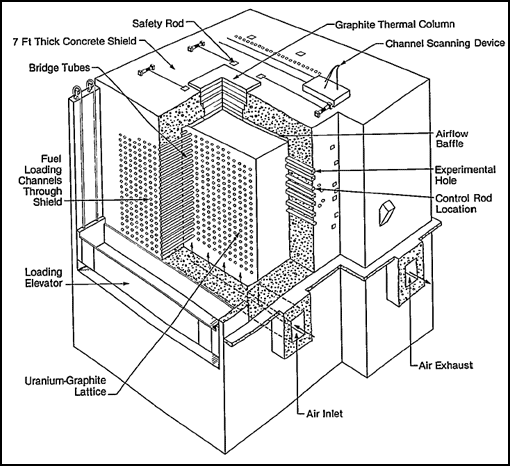The Manhattan Project: Making the Atomic Bomb
Part IV: The Manhattan Engineer District in Operation
Construction at Oak Ridge
DuPont broke ground for the X-10 complex at Oak Ridge in February 1943. The site would include an air-cooled experimental pile, a pilot chemical separation plant, and support facilities. Cooper produced blueprints for the chemical separation plants in time for construction to begin in March. A series of huge underground concrete cells, the first of which sat under the pile, extended to one story above ground. Aluminum cans containing uranium slugs would drop into the first cell of the chemical separation facility and dissolve and then go through the extraction process. The pile building went up during the spring and summer, a huge concrete shell seven feet thick with hundreds of holes for uranium slug placement. Slugs were to plutonium piles what barrier was to gaseous diffusion that is, an obstacle that could shut down the entire process. The Aluminum Company of American (Alcoa) was the only firm left working on a process to enclose uranium-235 in aluminum sheaths, and it was still having problems. Initial production provided mixed results, with many cans failing vacuum tests because of faulty welds.
